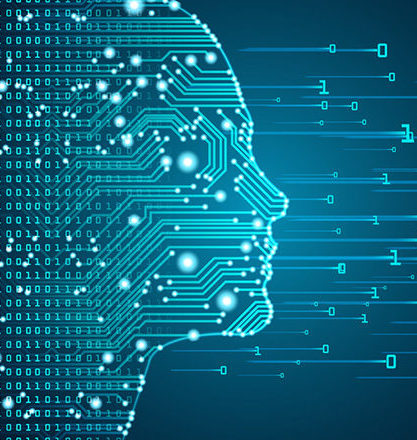Emergence of universality in the transmission dynamics of COVID-19
A. Paul. J. K. Bhattacharjee, A. Pal, and S. Chakraborty
arXiv:2101.12556 (accepted for publication by Scientific Reports)

The Talisman project addresses the questions of how macroscopic socio-economic metrics are amplified for individuals during a COVID-19 pandemic and what could be the mitigating strategies taking into account short-term immunity development and curated closures in a community. The aim is to obtain policy-making guidelines for optimal commercial activities in urban areas and to develop economic and healthcare support to rural areas that show elevated susceptibility to a COVID-19 pandemic. The key impact might be a significant reduction of the socio-economic and healthcare burden of COVID-19 pandemic by using data-driven methods to build curated mitigation and exit strategies tailored to local demographics.
Grant Name: Corona Crisis and Beyond - Perspectives for Science, Scholarship and Society
VolkswagenStiftung notified Ayan Paul that a grant of 119,200€ has been awarded for a period of 18 months for developing intellident algorithms for COVID-19 mitigation.
DESY, Hamburg wants to host Ayan Paul in the Theory Group of the Particle Physics Divison over the period of the grant. DESY will provide all the infrastructural and administrative requirements.
While the research team continues to push the forefront of COVID-19 resarch using their understanding of the physical laws, the project officially start at DESY on the 1st of May 2021 with an initial working period of 12 months.

Study the connection between socio-economic factors, beyond mobility and population density that determine the spread of COVID-19.
As COVID-19 spreads by contact and proximity, it is natural to assume that the pandemic will have its worst effects in regions that have the highest density of population and the largest mobility within the population. This effect can even be seen in several nations where, on the surface, the worst-hit regions were the most densely populated ones. In Germany, there seems to be no visible correlation between the population density of a region and the prevalence of COVID-19. In similar studies for the USA [1], some amongst the investigators have seen unexpected correlations between the prevalence of COVID-19 and socio-economic metrics, especially in rural areas. In this part of the project, we propose to study the correlation of COVID-19 prevalence with socio- economic metrics like mobility, unemployment, poverty, the fraction of population that are migrants, types of professions undertaken, etc. that can be found in the census data from 2011 at the district level. To understand the correlations better, we propose to use machine learning tools like boosted decision trees along with feature importance measures like the Shapley score to understand how the socio-economic metrics affect the disease spread.
Related publication:
A. Paul, P. Englert, M. Varga, Socio-economic disparities and COVID-19 in the USAWe are performing a study of disease spread using an agent-based model and developing a machine learning algorithm that will be able to identify immune individuals in a data-driven manner.
The study performs a simulation of an agent-based model to create a simulated dataset of immune agents starting with a small number of infected agents. To set up the rules for the agent-based model there has to be an understanding of how the disease propagates in real communities affected by the disease. This will require gathering knowledge from emerging clinical studies of COVID-19 affected communities. This will be augmented by large datasets emerging from affected regions that can be mined and analyzed. The immunity detection algorithm will be trained using the simulated dataset generated by the agent-based model. This algorithm will be a semi-supervised machine learning algorithm that will learn the optimal values of the parameters necessary for inferring on immunity development in individuals. Data related to local infection prevalence, duration of pre-symptomatic and symptomatic stages of the infection, demographic data on infected individuals, assessment of the prevalence of asymptomatic cases will help in the design of the simulation which will be used to train the immunity detection algorithm.
Develop and analyze a network model analysis of the commercial sector in conjunction with mobility to reach the optimal exit strategy.
Exit strategies during an ebbing pandemic requires special caution so as to not trigger its resurrection. A key component is understanding the fraction of the various commercial sectors that can be opened to sustain the flow of the economy while optimizing the social contact within the population. There are certain businesses that have a higher footfall and hence act as transmission hubs like restaurants and supermarkets. If a fraction of these hubs is closed intermittently, it can reduce the effective pathway for disease propagation hence slowing down the disease spread while it allows keeping the businesses at a sustainable level. However, this requires accurate large-scale prediction of what fraction of different business sectors need to be closed. To this end, we will develop multi-layered network models to represent businesses as nodes with their interdependence as links in one layer and the pathways of disease spread in another layer. Utilizing the business interaction network on the first layer, we will investigate how the partial closure of certain businesses affect other businesses that depend on them. Then, we will analyze mobility patterns on the business network by using mobility data collected from Google and identify hubs associated with high mobility in an urban area. We will adopt the agent-based model to simulate the mobility data and tune it with the fraction of open business on the first layer to reduce the mobility at the hubs. This will enable the analysis of how the intervention on the business network propagates and influence the spread of disease across the social interaction network on the second layer.
Understanding the socio-economic conditions that affect the spreading of the pandemic and devising effective exit strategies and mitigating policies that can simultaneously allow for the sustenance of economy and saving lives.

arXiv:2101.12556 (accepted for publication by Scientific Reports)